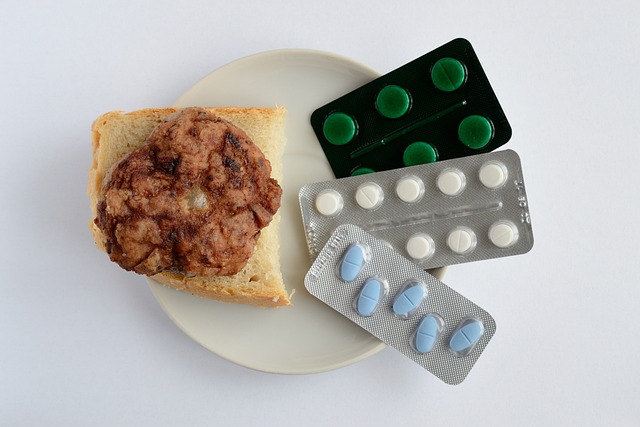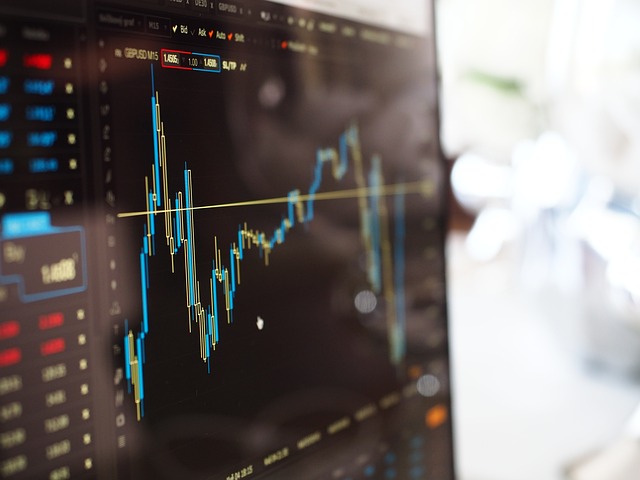How the Obesity Drug Market Is Influencing Healthcare Stocks
The surging obesity drug market is reshaping healthcare stocks, captivating investors and altering investment strategies. This article delves into how obesity drugs are fueling a new wave in healthcare, exploring the impacts and future prospects.
In recent years, the obesity drug market has catapulted into the spotlight, sending shockwaves through the healthcare sector. Traditionally, weight-loss treatments were seen as niche products with limited reach. However, the game-changing advances in obesity drugs and a growing global obesity crisis have transformed this once-overlooked sector into one of the most attractive avenues for healthcare investment. With the success of innovative treatments like GLP-1 receptor agonists, companies developing obesity drugs have seen their stock prices soar, sparking widespread investor interest and fueling a massive revaluation of the healthcare landscape.

The sheer scale of the market potential is staggering. According to the World Health Organization, obesity has nearly tripled worldwide since 1975, affecting more than 650 million adults. Obesity-related conditions, such as heart disease, type 2 diabetes, and certain cancers, pose significant economic and healthcare burdens, driving the demand for effective weight-loss solutions. This burgeoning market has become a goldmine for pharmaceutical companies, which are racing to develop new drugs that address obesity effectively and safely. As a result, companies that successfully produce these drugs are experiencing exponential growth in their stock value, prompting both seasoned investors and newcomers to keep a close eye on healthcare stocks linked to obesity treatments.
Two companies at the forefront of this surge are Novo Nordisk and Eli Lilly, whose innovative drugs have raised the bar for obesity treatments. Novo Nordisk’s Ozempic and Wegovy, along with Eli Lilly’s Mounjaro, have shown remarkable efficacy, giving patients new hope for sustainable weight loss. These drugs work by mimicking a hormone that targets areas of the brain regulating appetite and glucose levels, reducing cravings and facilitating weight loss. The enthusiasm surrounding these drugs has translated directly to financial gains, with both companies experiencing a substantial rise in stock value.
Novo Nordisk, a Danish pharmaceutical giant, has seen its share prices rise dramatically as demand for its obesity treatments skyrocketed. Wegovy, in particular, has been heralded as a breakthrough, attracting long waiting lists and a surge of interest among doctors and patients alike. Eli Lilly’s Mounjaro, a drug originally developed for type 2 diabetes, has also gained significant attention for its impressive weight-loss outcomes. Both of these companies are seeing increased investor confidence, with stock prices reaching new highs as demand for their obesity treatments accelerates.

Beyond these two companies, the success of these obesity drugs has had a ripple effect across the healthcare industry. The obesity drug market is now viewed as a potential multi-billion-dollar segment, fueling a new wave of competition and innovation. As a result, smaller biotech firms and established pharmaceutical players alike are directing more resources into obesity research and development, hoping to capture a slice of this lucrative market. This intense competition has not only broadened investment opportunities within the healthcare sector but also diversified investor portfolios with new, high-growth potential stocks. Investors who might have traditionally focused on more conventional healthcare stocks are now shifting their attention to the obesity drug market, drawn by the opportunity for impressive returns.
The influence of this market extends to healthcare service providers and insurers as well. With obesity treatments now demonstrating greater efficacy, there is an ongoing conversation about whether insurance companies will increase coverage for these drugs, potentially expanding the patient pool and increasing market demand even further. Many insurers currently hesitate to cover weight-loss drugs due to their cost and the ongoing need for long-term use. However, as evidence of their effectiveness grows, there may be a shift in policy that would broaden access and make these treatments even more desirable, ultimately driving more growth in healthcare stocks connected to obesity solutions.
While the financial success of obesity drugs has been impressive, the market's rapid growth has also led to questions about long-term sustainability and potential market saturation. As more companies launch their own obesity treatments, competition may drive down prices, potentially impacting profit margins. Additionally, concerns over side effects, patient adherence, and the cost of lifelong treatment could impact both market enthusiasm and stock performance in the future. For now, however, the overwhelming demand and high level of patient satisfaction continue to fuel optimism in the sector.
The increasing investment in obesity drugs is also pushing healthcare stocks to new levels of performance. Many investors view this as a key sector within healthcare, especially as companies continue to innovate with treatments that are more effective and have fewer side effects than older therapies. However, as the market grows, analysts are cautioning investors to approach with a balanced strategy, keeping in mind the risk factors that could affect these stocks. For instance, regulatory scrutiny around drug efficacy and safety remains a wildcard that could impact stock performance. The U.S. Food and Drug Administration (FDA) and its counterparts worldwide are keenly interested in ensuring these drugs’ long-term effects, as such treatments are often prescribed for extended periods.

In addition to individual stocks, the broader healthcare sector’s performance is becoming more influenced by the obesity drug market. As more healthcare providers integrate these drugs into treatment plans and as public awareness rises, healthcare stocks, including those indirectly connected to obesity, are seeing increased investor interest. For instance, companies providing healthcare support, diagnostics, and related services may benefit from this wave, as obesity management often requires a holistic approach that involves multiple aspects of healthcare.
However, not every company in the obesity drug market is a guaranteed winner. While giants like Novo Nordisk and Eli Lilly currently lead the market, emerging biotechs face significant financial and regulatory hurdles. Small companies might experience volatile stock prices as they navigate clinical trials, regulatory approvals, and partnerships with larger pharmaceutical firms. For investors, this presents both high-risk and high-reward scenarios that must be carefully weighed. Analysts recommend a diversified portfolio within healthcare to balance these risks, combining high-growth potential stocks in obesity treatments with more stable healthcare investments.
Looking to the future, the influence of the obesity drug market on healthcare stocks is expected to remain strong as long as obesity continues to be a major global health issue. With advances in genetics, personalized medicine, and AI-powered healthcare technologies, the treatment of obesity and associated conditions will likely become more sophisticated. These innovations could open new avenues for investment, allowing healthcare stocks to continue to thrive even if competition increases within the obesity drug market itself.
In conclusion, the obesity drug market represents a fascinating convergence of science, health policy, and finance. The demand for effective weight-loss solutions is driving unprecedented growth in healthcare stocks, providing investors with new opportunities and reshaping the healthcare sector in the process. As this market continues to evolve, both risks and rewards will grow, requiring investors to stay informed and carefully assess their strategies. With obesity drugs promising long-term market potential, healthcare stocks linked to these innovations are likely to remain a dynamic and influential force in the financial world for years to come.

